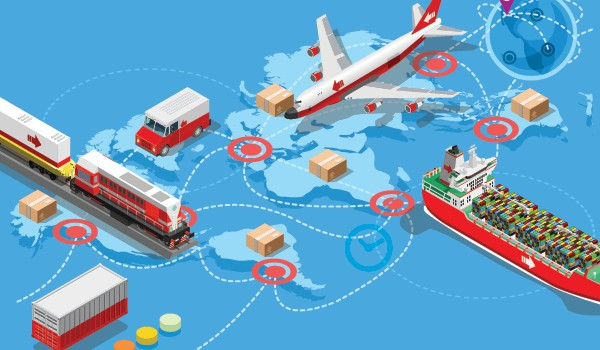1. India at the Frontlines of the Green Trade Revolution
The global trade landscape is undergoing a tectonic shift and it’s powered not by oil or data, but by clean energy and sustainable ambition. From carbon pricing to climate-linked supply chains, nations are reimagining what prosperity looks like in a warming world. Welcome to the era of green trade, where environmental responsibility isn’t a sideline, it’s the main act.
Amid this transformation, India stands not as a passive participant but as a bold pioneer. Our economy once primarily defined by coal-fired growth and industrial hustle is now being redefined by a conscious blend of development and decarbonization.
This isn’t just about policy declarations or international pledges. It’s visible in the numbers. As of March 2025, India’s total installed renewable energy capacity reached a staggering 220.10 GW, making us one of the fastest-growing clean energy markets in the world. Solar power alone has crossed 105 GW, reflecting both rapid scale and deep intent.
This green pivot is no accident. It’s part of a strategic, sovereign design anchored in climate commitments, executed through innovative policy, and accelerated by global capital. From the sun-scorched deserts of Rajasthan to offshore wind corridors in Tamil Nadu, India’s energy story is being rewritten cleaner, faster, and smarter.
As the world seeks models of sustainable progress, India offers something distinct: a “green leapfrog” approach, one that skips the carbon-heavy stages of development to embrace a low-emission future without compromising growth.
In other words, India isn’t just going green.
India is showing the world how green gets done.
2. Green Power, Big Money: Driving the Transition
India’s green transformation isn’t running on idealism, it’s running on hard numbers, bold bets, and strategic investments.
At the core of this shift is a renewable energy boom that’s not just record-breaking but future-defining. With 220.10 GW of installed renewable capacity and a national target of 500 GW of non-fossil energy by 2030, India is turning the abstract language of climate policy into measurable momentum.
This scale-up hasn’t happened in a vacuum. It’s backed by a wave of capital that signals growing global confidence. Between 2025 and 2030, India is set to channel a staggering ₹31 trillion (around $375 billion) into green infrastructure including solar and wind energy, electric mobility, and low-carbon technologies. That’s five times what we invested in the past five years.
This financial surge isn’t just domestic. Over $75 billion has already been invested in Indian renewables, with more than half flowing from foreign investors. Big names Macquarie, KKR, ADIA aren’t just placing bets; they’re embedding India into their long-term climate portfolios. Why? Because India’s policy ecosystem from production-linked incentives to green bonds and tax breaks is creating an environment where sustainability and profitability align.
And it doesn’t stop for generations. India is leading in carbon market innovation too. Our Perform, Achieve, and Trade (PAT) scheme alongside the launch of the National Carbon Credit Trading Platform positions us among the top carbon credit economies globally. These platforms are not only driving industrial decarbonization but also monetizing emission reductions, making sustainability a market opportunity rather than just a regulatory obligation.
Of course, challenges remain. Our net-zero ambition by 2070 demands an estimated $10 trillion in investment. But India has signaled, clearly and loudly, that we’re not waiting for help, we’re already building the future.
In India, green is not the new black it’s the new business model.
3. Climate Diplomacy & Trade Leadership
India’s green transition isn’t confined within its borders; we’re exporting more than solar panels and wind turbines; we’re exporting climate leadership.
At a time when global cooperation on climate is fragmented and fragile, India is emerging as a bridge-builder between developed and developing economies. Our role in launching the International Solar Alliance (ISA) and co-founding the Global Biofuel Alliance (GBA) underscores a new kind of diplomacy solution-oriented, inclusive, and southern-led. With over 100 member countries in the ISA alone, India is spearheading energy access, solar affordability, and resilience for the Global South.
But green diplomacy isn’t just about summits and signatures it’s about shaping trade. And here, too, India is beginning to define the contours of the next-generation global supply chain.
Our trade in green goods, solar modules, wind components, and energy-efficient technologies is climbing steadily. As of 2024, green imports made up 2.5% of India’s total imports, while green exports stood just below 1%. That trade imbalance might look like a gap, but it’s actually a growth strategy: importing high-tech components now to build domestic capacity and self-reliance for tomorrow.
India’s policy response is sharp: we’re lowering tariffs, incentivizing local manufacturing, and deepening integration into global green value chains. The goal isn’t just to participate in the green economy, it’s to anchor it.
At global forums from COP27 to the G20 India is also a loud voice for climate equity. We’re advocating for fairer climate finance mechanisms, technology transfers, and flexible frameworks that support emerging economies in their net-zero journeys.
India is positioning itself as a green trade architect:
Diplomatic in tone, assertive in ambition, and firm on fairness.
4. People at the Core: Jobs, Skills & Inclusion
The green transition isn’t just about gigawatts and global rankings, it’s about people. In India, the move toward a sustainable economy is as much a social transformation as it is an environmental one.
The numbers are promising: India is on track to generate 7.29 million green jobs by 2028, and a projected 35 million by 2047. These aren’t just solar-panel installers or wind-turbine engineers; they span industries like sustainable agriculture, electric mobility, green construction, and clean manufacturing.
But scale alone isn’t enough. To make this transition truly just and inclusive, India is investing in skills development, especially in rural and semi-urban regions. It’s a strategy built not only for growth but for equity. Workers from carbon-intensive sectors need re-skilling. Youth entering the workforce need green literacy. And local communities need to be participants not just spectators in the energy revolution.
National initiatives like Mission LiFE (Lifestyle for Environment) and the Green Credit Program reflect this ethos. They push beyond top-down regulation and aim to embed sustainability into daily Indian life whether it’s through decentralized renewable projects, eco-conscious habits, or grassroots climate entrepreneurship.
India’s approach to climate is fundamentally human-first. It’s not just about cutting carbon it’s about creating livelihoods, dignity, and opportunity in a greener world.
This is our leapfrog moment not only skipping dirty growth models, but designing a new one where development and decarbonization go hand in hand, and no one is left behind.
5. What’s Next: Shaping the Green Trade Future
India’s green trade journey is no longer a vision, it’s a reality in motion. But the road ahead demands more than momentum. It requires precision, purpose, and long-haul strategy.
First, we must scale renewable energy manufacturing not just generate clean power but also become a global supplier of solar panels, battery storage, and wind technology. This means doubling down on domestic production, innovation, and export readiness.
Second, we need to deepen integration into global green supply chains. Strategic trade deals, regulatory harmonization, and technology partnerships will position India as a go-to hub for sustainable solutions not just for Asia, but for the world.
Third, India must continue to lead in climate diplomacy. Our voice carries weight not only because of our population and growth, but because of our principles. Fairness, equity, and access remain core to our climate stance. As the world navigates carbon border taxes, ESG rules, and green tariffs, India can shape the rules not just play by them.
And finally, we must keep investing in innovation not just in tech, but in governance, finance, and policy. From smart carbon markets to lifestyle shifts powered by Mission LiFE, India is crafting tools that blend climate ambition with cultural relevance.
The future of global trade is green.
And India?
We’re not just participating.
We’re leading boldly, inclusively, and unapologetically on our own terms.
Conclusion: From Ambition to Action India’s Green Trade Era Has Begun
The global shift toward sustainable trade isn’t a distant trend it’s unfolding now. And India is not on the sidelines. We are at the heart of it powering progress, influencing policy, and inspiring global cooperation.
With record renewable energy adoption, surging green investments, policy innovation, and people-first climate action, India is proving that economic growth and environmental responsibility are not mutually exclusive, they’re mutually reinforcing.
Yes, the road ahead is complex. But with every gigawatt installed, every green job created, and every diplomatic alliance forged, India is sending a clear message:
A greener world isn’t just possible, it’s already under construction.
And we’re the ones laying the foundation.
FAQs
1. Why is India considered a leader in green global trade?
India is emerging as a global leader due to its massive investments in renewable energy (220.10 GW as of March 2025), progressive climate policies (like carbon trading schemes), and international climate diplomacy (ISA and GBA). It’s one of the few large economies actively balancing growth with sustainability at scale.
2. What are India’s key green energy goals for 2030?
India aims to reach 500 GW of non-fossil fuel capacity by 2030, aligned with its Panchamrit commitments made at COP26. This includes expanding solar, wind, hydro, and nuclear power while reducing reliance on coal.
3. How much is India investing in green infrastructure?
India plans to invest ₹31 trillion (~$375 billion) between 2025 and 2030 in green sectors such as renewable energy, electric mobility, sustainable transport, and carbon reduction technologies.
4. What are “green goods,” and how is India trading them?
Green goods refer to products like solar panels, wind turbines, and energy-efficient technologies. India’s import of these goods is helping build domestic manufacturing capacity, and trade policies aim to boost exports through tariff reductions and global supply chain integration.
5. How is India ensuring a “just transition” for workers and communities?
India is focusing on green job creation (7.29M by 2028, 35M by 2047) and inclusive programs like Mission LiFE and the Green Credit Program to ensure that sustainability benefits all sections of society not just urban or industrial elites.




